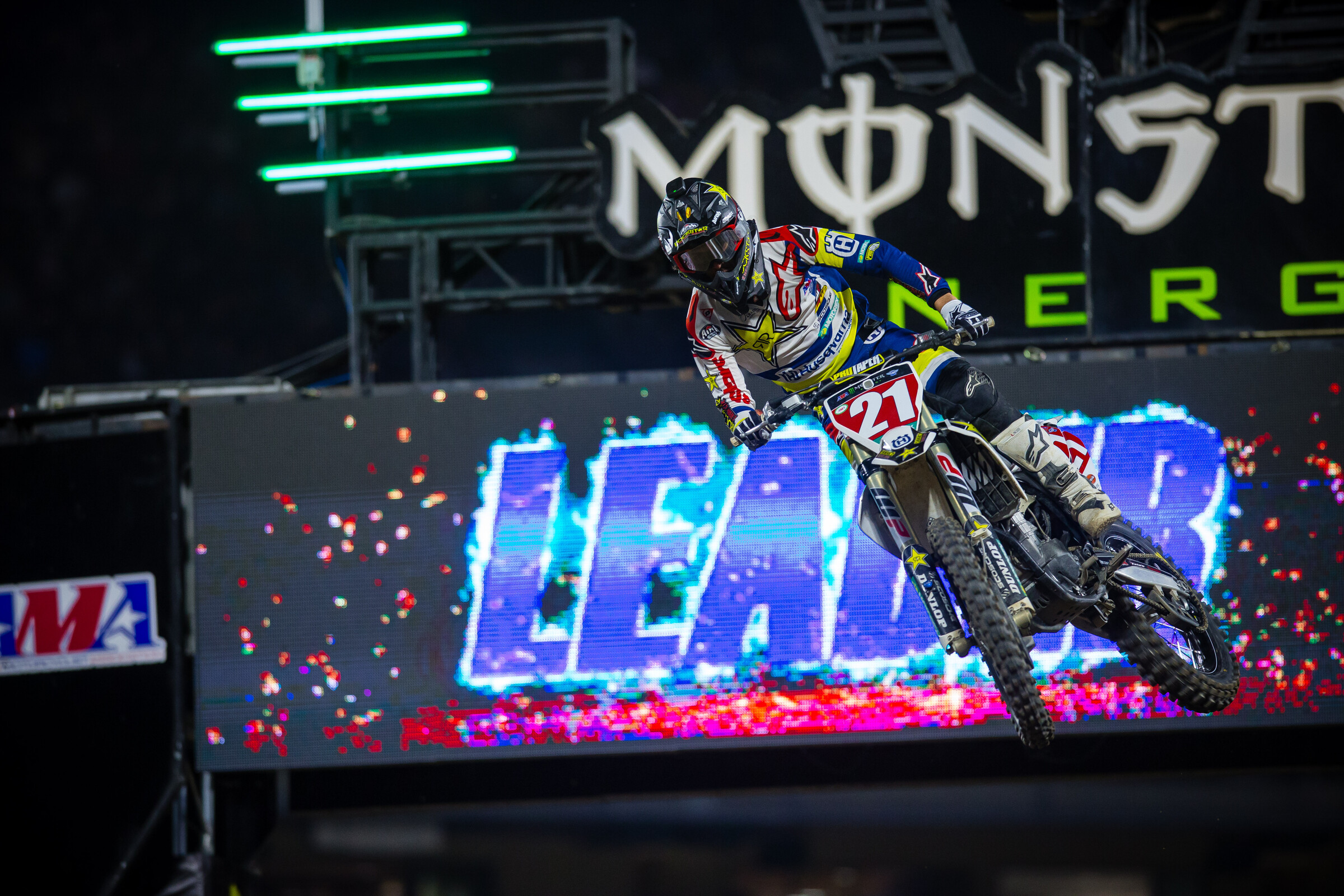Saturday’s fifth round of the 2022 Monster Energy AMA Supercross in Glendale, Arizona, will be the first Triple Crown format event in nearly two years. There were three Triple Crown events on the 2020 schedule, but due to COVID-19, we only saw two events ran before the championship went on pause, then eventually returned in Salt Lake City, Utah, for the final seven rounds. In those final seven rounds, they were all under the normal format (qualifying, heat races, LCQs, then main events)—only the finale differed because it was an East/West Showdown main event where both classes raced together.
Because of this, the last Triple Crown event was the 2020 Arlington Supercross on February 22, 2020, where Eli Tomac finished 5-1-1 for the 450SX overall on a Kawasaki KX450 and Chase Sexton finished 2-1-2 for the 250SX East Region overall on a Honda CRF250R.
So, since you might need a refresher on the three-race format, we figured we would provide one.
When Was the Triple Crown Format Introduced?
Prior to the 2018 Monster Energy AMA Supercross Championship, the Triple Crown format was introduced. The Triple Crown format is similar to the Monster Energy Cup three-race format, but instead pays championship points at the end of the night (unlike the off-season Monster Energy Cup race that is a stand-alone event). The initial format has been adjusted slightly—the length of the three races was changed in both classes prior to the start of the 2019 season—but the three-race format has happened eight times since 2018.

Which Events Are Triple Crowns This Year?
In the 2022 season, there are three Triple Crown events on the schedule: round five Glendale Supercross (250SX West Region), round eight Arlington Supercross (250SX East Region), and round 13 St. Louis Supercross (250SX East Region).
Brief Overview of The Day
Instead of each class having qualifying, heat races, LCQs, then main events, the Triple Crown format will have qualifying followed immediately by an LCQ for each class. The top 18 in qualifying are automatically set for the three races, and the first four spots of the LCQ will determine the final four spots in each class, giving us 22 riders on the gate for the three races. There will be a break between the LCQs and the start of the “night show” racing in order to allow for track maintenance and teams and riders to prep their machines from the day and/or LCQ. Gate picks for the first race will be determined by the riders qualifying finish, as the four LCQ riders will have the last four gate picks. In the second race, the gate picks will be determined by the race one results. In the third race, the gate picks will be determined by the race two results.
Normal Format: qualifying, heat races, LCQs, then main events
Triple Crown Format: qualifying, LCQ, then three races
For example of a Triple Crown day, here is the race day schedule for the 2022 Glendale Supercross (Note: this race will also have 250SX Futures and KTM Junior races as well).
How Long Are These Races?
Regular Format Race Length
Heat race Length: 6 minutes plus 1 lap (for both 250SX and 450SX Classes)
LCQ length: 5 minutes plus 1 lap (for both 250SX and 450SX Classes)
Main event length:
250SX Class
15 minutes plus 1 lap
450SX Class
20 minutes plus 1 lap
Triple Crown Format Race Length
LCQ length: 5 minutes plus 1 lap (for both 250SX and 450SX Classes)
250SX Class
Race 1 – 10 minutes plus one lap – 22 riders
Race 2 – 10 minutes plus one lap – 22 riders
Race 3 – 10 minutes plus one lap – 22 riders
450SX Class
Race 1 – 12 minutes plus one lap – 22 riders
Race 2 – 12 minutes plus one lap – 22 riders
Race 3 – 12 minutes plus one lap – 22 riders
How Does the Overall Scoring/Points Work?
Unlike a typical main event, the three individual races do not score points in the Triple Crown format. The finishing order is based on Olympic scoring, and then the totals from all three races are added together for the overall (the lower the number the better). Once the overall positions are determined, the riders will be awarded points relevant to where they finish, just as they would in a typical main event under the regular format.
We have seen this format lessen the bad nights of riders, most notably at the 2020 Arlington Supercross. After completing 15 laps in the second race, Cooper Webb crashed hard and did not finish the race, officially recording 17th. He did not start the third and final race as neither did Justin Brayton nor Broc Tickle. Since Tickle did not start the second race either and Brayton only completed three laps in the second race, Webb finished 20th ahead of them as he completed 15 laps. Webb's 2-17-20 finishes earned him 12th overall on the night, and he earned 11 championship points. While he did not go on to win the championship that year, at the moment those points kept him in the fight until the last several rounds of the season. With a 17th or 20th place (or worse) finish in a regular main event, riders are earning far less points (see the chart above). A night where Webb could have gained only one or two points with a crash and DNF resulted in him earning double-digit points because of his great first race.
What if there is a Tie-Breaker?
If a tie happens, the tie-breaker is the better finish in the third race (a win beats a second place, a second place beats a third, etc.)
Other Notes
Two Bikes
Unlike during the usual race day format, during the Triple Crown format, riders are allowed to use two different motorcycles throughout the event (as long as they pass technical inspection, of course). This way, if a machine breaks in the the first or second race, a rider/team can turn to a second bike because of the quick turnaround between races.
Great Racing
So far, these Triple Crown races have allowed for some great racing. Although several riders have voiced their displeasure with the format because of the elevated risk factor that comes with three important starts, this format has resulting in some great racing that delivered several different winners. In the eight events run to date, seven different riders have claimed a race win in the 450SX Class and 13 different riders have claimed a race win in the 250SX Class. In the 450SX class there have been three different race winners on the same night at four of the eight events, and there have been three different race winners on the same night at five of the eight events in the 250SX Class. Only one rider from each class has swept all three main events in one night: Austin Forkner in the 250SX East Region at the 2019 Detroit Supercross and Ken Roczen in the 450SX Class at the 2020 Glendale Supercross. Tune in on Saturday night to watch the action.








